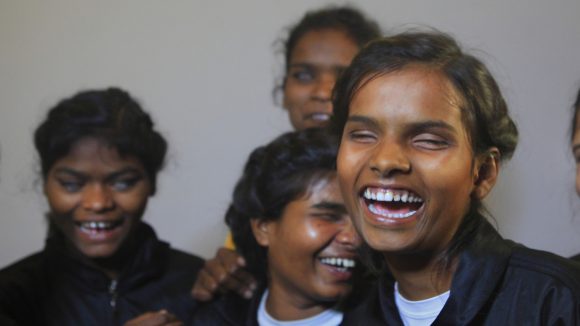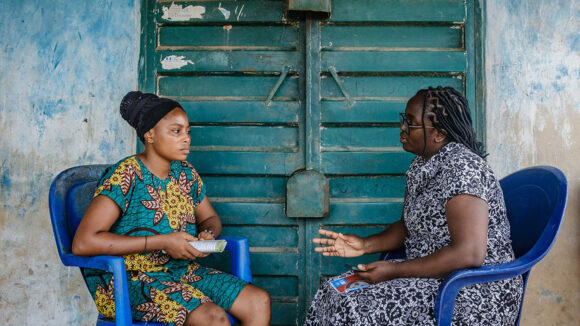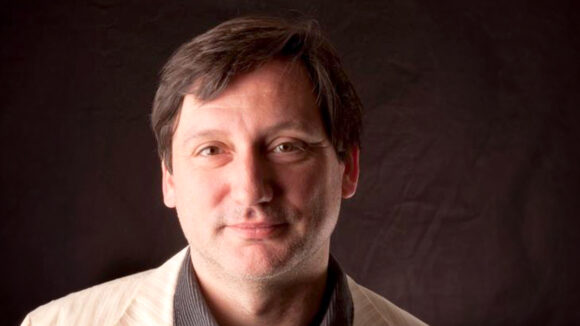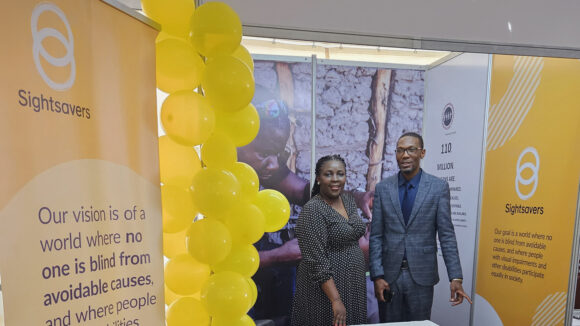“We have met fear, and we have conquered it!”

Fifty years ago, on 20 February 1969, seven young men with visual impairments climbed to the top of Mount Kilimanjaro, Africa’s highest mountain.
Sightsavers’ founders, Sir John and Lady Jean Wilson, planned the trek “to help create a new image of blindness in Africa”. Sightsavers, which was commonly known at the time as the Royal Commonwealth Society for the Blind, designed the expedition to prove that “trained blind people have the mental and physical stamina to achieve exacting goals”.
The charity wanted to combat the negative beliefs held by employers and communities about disability, which prevented many people from getting jobs and going to school.
The idea was met with an immediate enthusiastic response from blind people throughout the region, many of whom rushed to apply to take part. Given the risk of altitude sickness and the sharp differences in temperatures on the climb, only a few of the fittest applicants could be selected to ensure the expedition had a good chance of success.

Join our campaign
We fight for the rights of people with disabilities living in developing countries.
More on the campaign
Heading for the summit
A hard, two-week training camp was held for the chosen trekkers, who came from Tanzania, Uganda and Kenya. They were taught skills including rock-scrambling, how to climb and abseil using ropes, and how to use radio equipment.
The attempt to scale the mountain began on Monday 17 February. After climbing through the wet, dank rainforest, the trekkers made camp at 8,000 feet. The second began the ‘long haul’ up to the 15,000ft caves where the trekkers would spend the night.
On the third day, the company passed through dusty, rocky country, and as they ascended, the men were excited to experience snow and ice for the first time. But by now some were suffering from altitude sickness, sunburn and the bitter cold, and one trekker was forced to turn back.
That night, in the severe cold and with a lack of space, the men had to pile up on each other to stay warm. Setting off for their summit attempt at 3am on Thursday 20 February, they moved slowly and with difficulty, having to pull out the ice-axes to keep silently cutting steps through the snow.
Just after noon that day, after nine hours of clambering – the last 3,000ft against high winds and sub-zero temperatures – the remaining trekkers and their guides made it to the top.
As they struggled, exhausted, onto the summit, one of the guides shouted into the walkie-talkie: “This is a moment of glory!”
His words, picked up by radio, were the first broadcast made from the peak of the mountain.

Returning heroes
A few minutes later news of this extraordinary achievement was relayed by the press agencies from Nairobi and was covered internationally by newspapers, television and radio stations throughout the world.
From London, the Queen sent a warm message of support and the story made front page news in most African papers.
After they successfully reached the summit of Kilimanjaro, the young men were received in their hometowns as heroes. The three men from Uganda arrived home to a state welcome and their boots, worn out and beyond repair, were preserved in the Uganda National Museum.
Perhaps one of the most telling comments was made by 25-year-old trekker Andikati, son of Lemarleui, who was a member of the Samburu tribe in Kenya.
“We were blind; we are now new men. We have met fear. We have conquered it. Though we still cannot see, we have walked through the gardens of the gods and they were not angry. Soon we will be safe. It has been a fearsome and beautiful experience, has it not, my brothers?”
His words were met by murmurs of approval from his exhausted fellow trekkers.
Author
 Maria Fsadni
Maria Fsadni
Maria is Senior Media and PR Officer at Sightsavers.
Please help our work to prevent avoidable blindness
DONATE
Why community collaboration is important in our research
Our research on female genital schistosomiasis has highlighted the need to establish a safe and supportive environment for participants when studying sensitive topics.

The key to inclusive education is engaging organisations of people with disabilities
Collaborating with organisations of people with disabilities (OPDs) on our inclusive education projects has earned the Sightsavers-led Inclusive Futures consortium a Zero Project Award in 2024.

Six takeaways from the International Conference for Public Health in Africa
Sightsavers’ Hortance Manjo shares insights from the event in Zambia, which highlighted eye health for the first time.